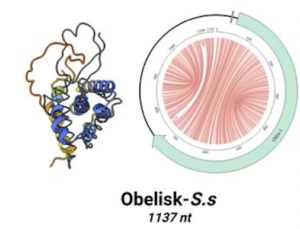Ending Endotoxemia?
Endotoxemia is an important, though under-recognized factor in the development of many chronic diseases, including type 2 diabetes. Components within the gut microbiome can either contribute to or minimize the risk of endotoxemia, Dr. Leyer explained.
Several studies have shown that endotoxemia correlates with fat intake in healthy men (Erridge et al Am J Clin Nutr 2007; Laugerette et al. J Nutr Biochem 2011; Amar et al. Am J Clin Nutr 2008; Ghanim et al. Diabetes Care. 2009). The presence of bacterially-derived endotoxins correlates with systemic and adipose tissue obesity in obese women.
From a risk factor viewpoint, endotoxemia is bad news: it correlates positively with fasting insulinemia, glycemia, total cholesterol, and/or triglycerides in type 2 diabetic patients (Creely et al, Am J Physiol Endocrinol Metab. 2007; Al-Attas et al. Cardiovasc Diabetol. 2009). There is a strong association between presence of bacterially-derived lipopolysaccharides in the blood and the likelihood of diabetes.
Dr. Leyer explained that obesity-associated changes in the gut flora create a feed-forward cycle in which there is reduced expression of gut barrier proteins, leading to increased gut permeability, which makes it easier for inflammatory lipopolysaccharides to cross from the gut lumen into the bloodstream.
In animal experiments, radical changes to the gut microbiome via targeted antibiotic treatments can blunt the manifestations of insulin resistance and impaired glucose tolerance.
A 2010 study of human subjects showed that a probiotic strain called Lactobacillus acidophilus NCFM could improve insulin sensitivity and reduce systemic inflammation compared with placebo (Andreasen AS, et al. Br J Nutr. 2010). This response appears to be mediated by the endocannabinoid receptor system.
Bifido Breakthrough
Some of the most promising new research has centered around a strain of Bifidobacterium lactis called B420, which is proving effective in reducing adiposity and inflammation while improving insulin sensitivity in diabetes-prone mice.
Citing the work of Dr. Remy Burcelin and his team at INSERM Toulouse, Dr. Leyer noted that this particular bacterial strain was chosen because it promotes endothelial wall integrity, thus minimizing transit of lipopolysaccharides and other endotoxins into the blood stream. In this sense, it is an “upstream” treatment, one that can prevent the cascade of systemic inflammation and insulin resistance that characterizes metabolic syndrome and type 2 diabetes.
Dr. Burcelin showed that treatment with B420 was able to blunt the detrimental effect of a high-fat diet in these diabetes-prone animals. Compared with the placebo-treated animals, those receiving the probiotic for one month had near-normal fasting insulin levels and consistently lower glucose levels.
Further mouse work has shown that treatment with the B420 strain can blunt the weight gain caused by a high fat diet.
“The ability to modulate the microbiome and therefore influence metabolic states is a game-changer,” said Dr. Leyer, noting that human studies of Bifidobacterium lactis B420 are underway, looking at the possibility of preventing the onset of diabetes in people with metabolic syndrome.
As a probiotic genus, Bifidobacteria have not received quite as much research attention or publicity as the Lactobacilli, but Dr. Leyer predicts that the genus will become increasingly important. Higher prevalence of Bifidobacteria in the gut seems to correlate with a leaner phenotype.
It is interesting to note that in humans, Bifidobacteria numbers are higher in normal-weight children compared with children tending towared overweight by age seven (Kalliomaki, Am J Clin Nutr, 2008). Bifidobacteria are also present in higher numbers in normal-weight versus overweight women, and also in women with lower weight gain during pregnancy (Collado, Am J Clin Nutr, 2008).
“The complexity of this important genus is being unraveled,” Dr. Leyer said. “It’s a very exciting time to be researching the small world within, and it’s far-reaching impacts on metabolic disease.”
END







